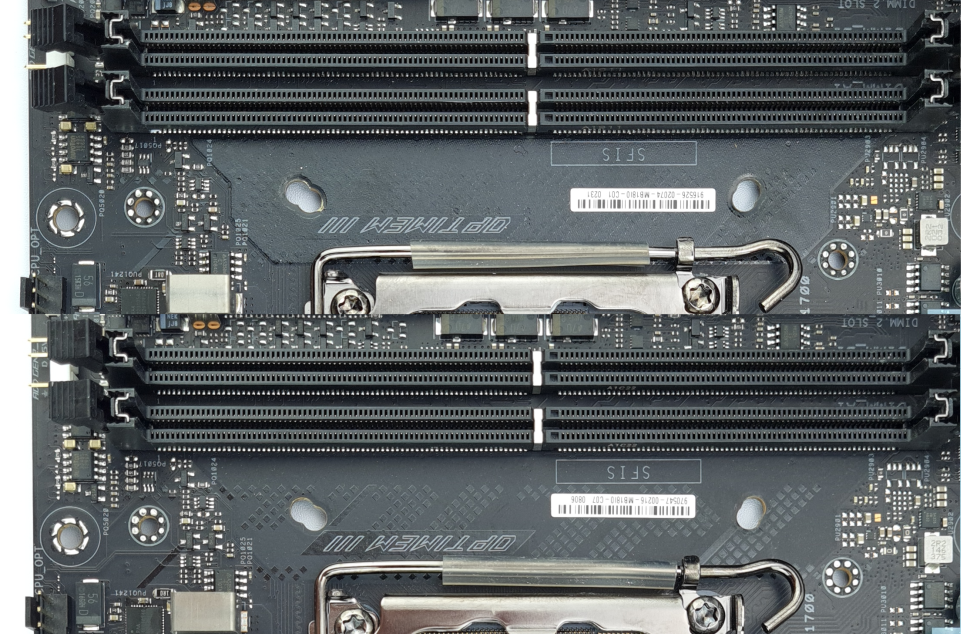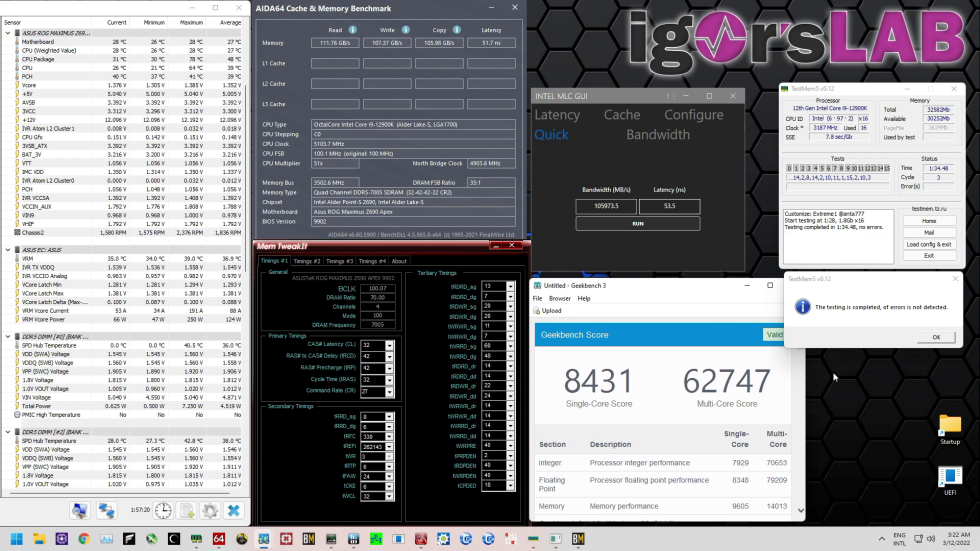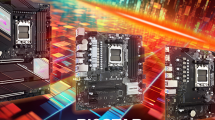RAM OC – 1T vs. 2T, old vs. new batch and 7000 Mbps stable
Now we come to the Achilles heel of the Z690 Apex motherboard, RAM overclocking. I already mentioned at the beginning that my board from 2021 cannot stably run a RAM kit with DDR5-6400 XMP profile. With some manual tuning and adjusted voltages, 6450 Mbps with Command Rate 2T is possible, but only with a lot of manual effort and not only by loading the XMP profile, as the QVL requires.
In order to better determine the cause of this clock limit, I also tested the channels and slots of both boards individually, each with the same CPU and the same DDR5 module. Furthermore there are each tests with instruction rate 1T and 2T, because this has also high influence on the stability. To take the timings and voltages as far as possible out of the equation, they are set to the following fixed values: primary timings 34-44-44-34, Vsa 1350 mV, VDD/VDDQ 1500 mV, CPU VDDQ 1500 mV, VDD2 1350 mV.
The test task is to manage a run of Geekbench 3, which at least gives an indication of the stability of the set clock rate. In any case, Channel A, which is closer to the CPU, is weaker than Channel B. Also, as expected, 1T requires a lower clock rate, as well for training in post as for completing the benchmark.
It gets interesting with the difference between the boards in relation to the set command rate. While only 150 Mbps more can be run in dual-channel at 1T, it is a gigantic 750 Mbps in 2T. The picture continues when testing the individual channels with 1T, with the exception of the 2022 board with 1T in Channel A, where the training partout could not handle more than 6200 Mbps. Presumably, this configuration has a training dead zone right here, which could theoretically be fixed with a future BIOS update.
750 Mbps between two motherboards with the same name falls outside of manufacturing tolerances or Silicon Lottery as I understand it. And Asus also confirms that the 2021 board does not comply with the QVL and would therefore be eligible for an exchange. But what is the difference between the boards? Are there any real physical differences that can be seen with the naked eye? See for yourself:

Here you can see the two boards in the area between the socket and DIMM slots. It is noticeable that the sticker with the inscription “OPTIMEM III”, which is also used for shielding on the 2021 board, is apparently thicker at the top or has been worked into the surface of the board less well, so that a sharp edge can be made out at the top. At a second glance, it is also noticeable that the solder contacts of the DIMM slots look a bit coarser at the top and a bit finer and more even at the bottom of the 2022. Is this now the cause of the RAM-OC issue? We can’t say for sure, but it’s certainly an interesting conspicuity.
And what can an Asus Maximus Z690 Apex do at best when it comes to RAM OC? With the Teamgroup 6400 Mbps kit and a fan on the RAM modules, even the DDR5-7000 mark can be cracked. With primary timings 32-42-42-32 and 1.55 VDD/VDDQ on the RAM, this overclocking is really at the limit of what is stably feasible, but it is stable – whether in TM5, Karhu or Y-Cruncher. And the configuration also just cracks 14000 points in the Geekbench 3 multi-core memory score.




































43 Antworten
Kommentar
Lade neue Kommentare
Veteran
Mitglied
Veteran
Veteran
Veteran
Mitglied
Veteran
Veteran
Urgestein
1
Veteran
Veteran
Veteran
Veteran
1
Mitglied
Urgestein
1
Mitglied
Alle Kommentare lesen unter igor´sLAB Community →